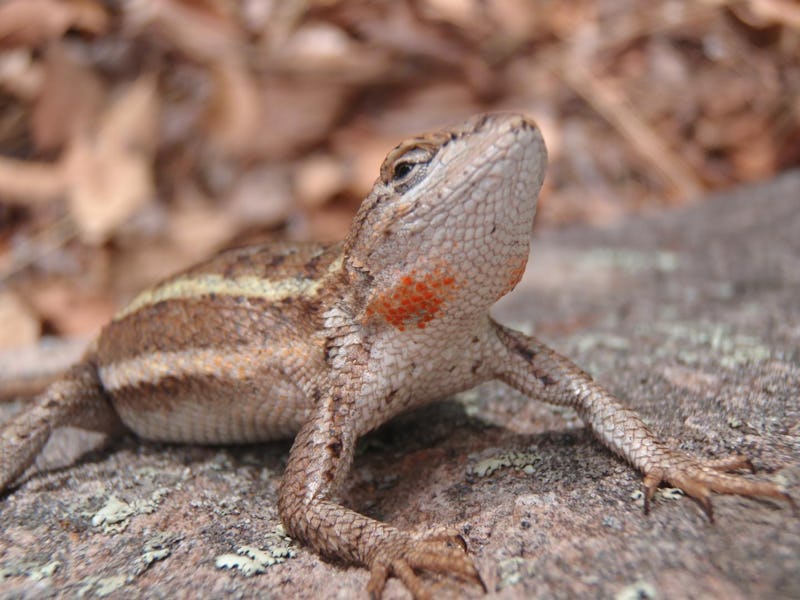
Our pre-date primping rituals are a distillation of all of our assumptions about the animal kingdom: The hotter you look tonight, the more likely you’ll get laid. Nature’s babes usually have markings that separate them from their less sexy peers, and it was always thought that gave them a leg up in finding mates. While that might be true for male animals, a new study shows it’s not the only reason beauty exists in females.
Take, for example, the striped plateau lizard that the biologists who recently published in the journal Evolution bring up: Females in this species develop bright red-orange patches on their necks when they’re ready to hook up — sort of like the way someone might wear red lipstick to seem more appealing. Researchers have observed in the past that males seem to prefer females with brighter spots, which seems to make sense. But when they actually looked at the numbers, they realized that the bright-orange babes didn’t have that much of a sexual advantage. Why, then, do the “beautiful” bright spots exist?
“For females, the benefits of beauty likely go beyond their success in the dating and mating market,” the University of North Carolina-Chapel Hill researchers wrote in a statement.
This blue female crab didn't paint its claws red for no man.
Unlike with females, the reasons male hotness exists in evolution are pretty clear: In nature, dudes are always showing off their flashy traits — lions have their manes, goats have their horns, peacocks literally peacock — to catch the eye of local females. But can the same be said for females? Scientists have always assumed that “beauty” in animals evolved because prettier girls got the guy (and therefore passed on their pretty genes), but apparently this is not the case.
When the researchers took data about the romantic success of pretty females over their less cute counterparts and plugged it into a mathematical model to test the theory that hot females developed their beautiful traits because it made mating easier, they discovered something that wasn’t entirely consistent with what evolutionary biologists have assumed about beauty. Attractive females didn’t really have much of an “evolutionary edge over their plainer counterparts — even when their good looks help them snag superior mates,” they write. So much for the old, male-centric theory!
What then, led to the evolution of female beauty, such as the scarlet-tipped claws of the blue crab Callinectes sapidus or the frilly-legged dance flies, if not an increased ability to make babies? This is where the researchers remind us that survival is a little more complicated than simply hooking up and making babies: individual animals need to survive long enough to get to that point, and for that, they need friends, food, and shelter, too. One leading theory, known as “social selection” hypothesis, is that having “beautiful” traits resulted in certain females getting better protection from predators or increased access to resources. In other words, they were better able to look out for themselves.
“First, our model is a formal reminder that to conflate male mate choice with sexual selection on females is to draw a false equivalency,” the authors write. Reminder two is that male choice doesn’t necessarily drive the development of female traits we’ve come to think of as beautiful or sexy “even when there is variation in male quality.” In light of this research, calling these traits “sexy” seems misguided, but may we suggest “empowered” instead?